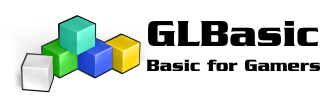Hi all,
I am having some trouble creating what should be a simple animation for an iPhone app I'm working on--
The animation is supposed to draw two buttons rising up out of the ground for the user to press, but instead I just get crazy mangled looking results. Is there an easy way to just load in and display a pre-made animation, and have it run through its frames in one location (i.e. not require any user input to etc. to change frames as in a walking animation). Also, what's the best way to control the speed at which an animation iterates through its frames? As you can see here I just made it pause at every frame so I could check on what was being displayed, but in the final app the animation should run smoothly on its own when called.
I am having some trouble creating what should be a simple animation for an iPhone app I'm working on--
Code (glbasic) Select
LOADANIM "yesnobuttons.png", 0, 295,300
FOR y=0 TO 19
DRAWANIM 0, y, 0, 100
SHOWSCREEN
MOUSEWAIT
NEXT
MOUSEWAIT
The animation is supposed to draw two buttons rising up out of the ground for the user to press, but instead I just get crazy mangled looking results. Is there an easy way to just load in and display a pre-made animation, and have it run through its frames in one location (i.e. not require any user input to etc. to change frames as in a walking animation). Also, what's the best way to control the speed at which an animation iterates through its frames? As you can see here I just made it pause at every frame so I could check on what was being displayed, but in the final app the animation should run smoothly on its own when called.
